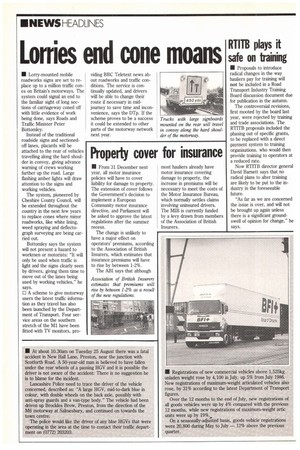Lorries end cone moans
Page 8

If you've noticed an error in this article please click here to report it so we can fix it.
IN Lorry-mounted mobile roadworks signs are set to replace up to a million traffic cones on Britain's motorways. The system could signal an end to the familiar sight of long sections of carriageway coned off with little evidence of work being done, says Roads and Traffic Minister Peter Bottomley.
Instead of the traditional roadside signs and sectionedoff lanes, placards will be attached to the rear of vehicles travelling along the hard shoulder in convoy, giving advance warning of crews working further up the road. Large flashing amber lights will draw attention to the signs and working vehicles.
The system, pioneered by Cheshire County Council, will be extended throughout the country in the next few years to replace cones where minor roadworks, like white lining, weed spraying and deflectograph surveying are being carried out.
Bottomley says the system will not present a hazard to workmen or motorists: "It will only be used when traffic is light and the signs clearly seen by drivers, giving them time to move out of the lanes being used by working vehicles," he says.
ID A scheme to give motorway users the latest traffic information as they travel has also been launched by the Department of Transport. Four service areas on the southern stretch of the MI have been fitted with TV monitors, pro viding BBC Teletext news about roadworks and traffic conditions. The service is continually updated, and drivers will be able to change their route if necessary in midjourney to save time and inconvenience, says the DTp. If the scheme proves to be a success it could be extended to other parts of the motorway network next year.




























































































